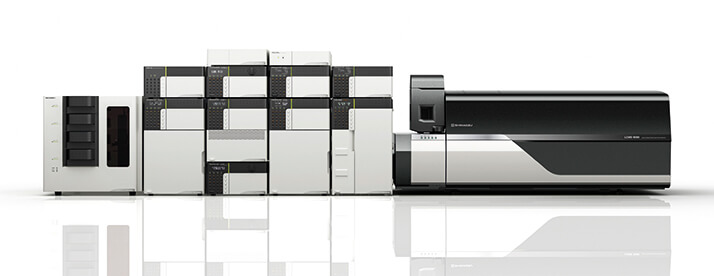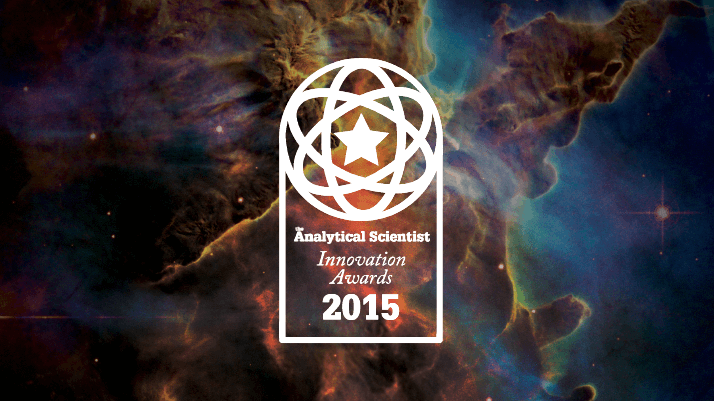
1. Full Spectrum Molecular Imaging
A combination of advanced MS imaging technologies, designed to deliver high quality, comprehensive, spatially resolved molecular information. Combining three technologies (MALDI Imaging, DESI Imaging and Ion Mobility) along with high-performance time-of- flight mass spectrometry and powerful informatics tools, Full Spectrum Molecular Imaging delivers multi-layered, information-rich data from a single sample. Providing more comprehensive, detailed information than from any individual imaging technique, Full Spectrum Molecular Imaging extracts maximum information from minimal sample, enabling research scientists to definitively and objectively interpret molecular distribution information. Produced by: WatersPotential impact: The choice of complementary ionization techniques, combined with high performance ion mobility separation and high resolution MS, provides a more complete and comprehensive picture of the sample than with any individual imaging technique, through mapping the spatial distributions of a range of molecule types, including small molecules, drugs and metabolites, lipids and peptides..) Full Spectrum Molecular Imaging therefore has the potential to expand the use of MS imaging across a wide variety of disciplines, from enhancing capability for established applications in health sciences (for example, histopathology research) and pharmaceuticals (for example, DMPK drug distribution studies) to opening up innovative new application areas in the food and environmental and chemical materials fields.
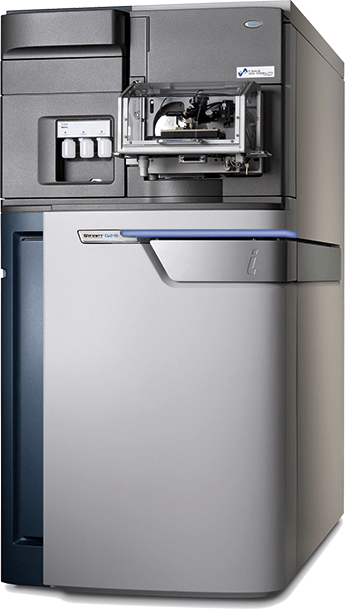
An intuitive, fully integrated software workflow covering experiment set-up, data acquisition, processing and visualization further enhances accessibility and enables scientists to translate complex samples into meaningful answers faster and easier than ever before. What the judges say: “Combines a range of MS imaging technologies to improve data analysis capabilities for complex applications – it has the potential to make imaging techniques truly useful.” “In addition to knowing which compounds are present and at what levels, it is crucial to understand where the molecules are in the sample. MS imaging allows us to get that information.” “A powerful combination of MS imaging modes.”
2. REIMS Research System with iKnife Sampling
A direct sampling ionization technique combined with high performance time-of-flight MS Produced by: WatersPotential impact: Removing the need for sample preparation and chromatographic separation has the potential to make a huge impact on the time and money required to analyze large numbers of samples by MS. When combined with multivariate statistical analysis, users across a range of disciplines, such as food research, tissue research, and microbiology research, can quickly and easily differentiate samples from one another and confidently identify the differentiating features, allowing greater insight into chemical and biological systems. The unique handheld sampling device achieves accessibility and ease of use in a way that no other MS technique has done before, with the long, flexible connection between the sampling device and the MS allowing the user to bring the analysis directly to the sample. What the judges say: “This is a potential game changer in terms of real-time sampling and practical analysis.” “Sample preparation is difficult, especially if the location of compounds in the sample is also relevant. The iKnife allows easy sampling while simultaneously providing important information on the location of compounds.”
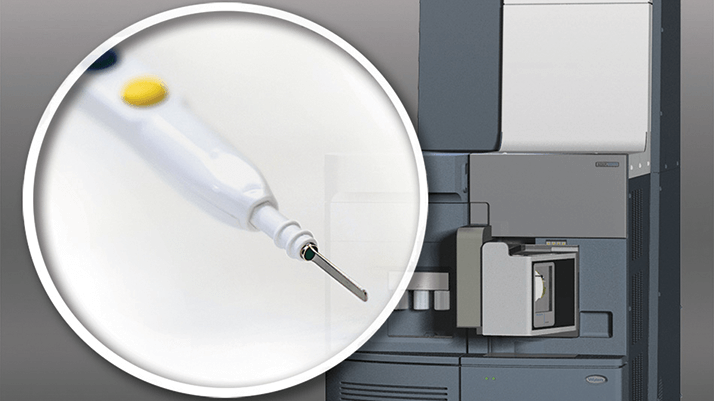
3. Thermo Scientific Orbitrap Fusion Lumos Tribrid Mass Spectrometer
A high-performance mass spectrometer with enhanced sensitivity Produced by: Thermo Fisher Scientific The Fusion Lumos Tribrid mass spectrometer is designed to achieve proteome-wide coverage by combining the versatility of a tribrid system with the selectivity of Orbitrap technology. The instrument sets new standards for performance for the most challenging research applications in advanced proteomics, biopharma and metabolomics. The instrument features enhanced sensitivity resulting in improved analyte detection, characterization, and quantitation, enabling scientists to perform more comprehensive sample analyses faster and with better accuracy than ever before. It incorporates: a brighter ion source for increased sensitivitya segmented quadrupole mass filter with improved selectivity and ion transmission
Advanced Vacuum Technology for improved ion transmission of high molecular weight ions to the Orbitrap mass analyzer
higher-capacity electron transfer dissociation (ETD) fragmentation. The Tribrid instrument excels in the most challenging applications, including analysis of low-level post translational modifications, multiplexed relative quantitation using isobaric tags, intact protein characterization, as well as MSn analysis of small molecules.
Potential impact: Scientists rely heavily on data generated from mass spectrometers and require the most advanced technology for deep sequencing analyses. The more sensitive the mass spectrometer, the more accurate the resulting data, which contributes to a more comprehensive analysis of proteomic samples. The advanced sensitivity, and features to improve structural analysis and characterization, enable scientists to gain more expansive and in-depth analytical information; a more comprehensive analysis of proteomic samples can be undertaken, with the multiplex capabilities supporting simultaneous protein quantification. Furthermore, the Fusion Lumos system provides fast and deep proteoform-resolving measurements of samples, including clinical samples to facilitate translational research.
What the judges say: “Thermo Fisher Scientific continues to innovate with Orbitrap technology – and [the Fusion Lumos Tribrid] is no exception, taking proteomics analysis to a new level in terms of sensitivity and speed.”
4. Dual-needle Technology for LC-autosamplers
Two independent flow paths within a single LC-autosampler module Produced by: Agilent Technologies The Agilent Dual-needle option provides two flow paths within one autosampler by doubling the needle, the sample loops and the needle-seats and by adding a second valve. It allows increased injection cycle speed, providing background activities, such sample prep steps, draw samples, wash injection needles to remove carryover, and so on, all while an actual run is ongoing. It can also be used to gain flexibility by adding two different sample-loop volumes (for example, 20 µl loop on one side and up to 500/900 µl on the other port), which allows switching from small analytical injections at minimized system delay volumes to large injections without a need to change hardware. Scientists now have two injection ports to either use separately for specific applications or to reserve one as an ultra-clean reference port.Potential impact: The Agilent Dual-needle has shown already close to 60 percent time savings for a sequence of analytical runs with smart overlapped injections and automated column regeneration when compared to the same Agilent Multisampler using a standard single injector port. The flexibility aspect with two different sample volumes allows for very large linear dynamic range of injections using the same instrument and calibration avoiding comparison of analysis done by two systems or at least two different hardware setup of the same machine. What the judges say: “This innovation looks very simple, but simply addresses a complex problem.” “This development increases the versatility of LC instrumentation – and that is good; LC itself is much more versatile than current LC instrumentation, which requires frequent reconfiguration of instrumentation.” “Solves the real problem of the rate-limiting step in high throughput LC.”
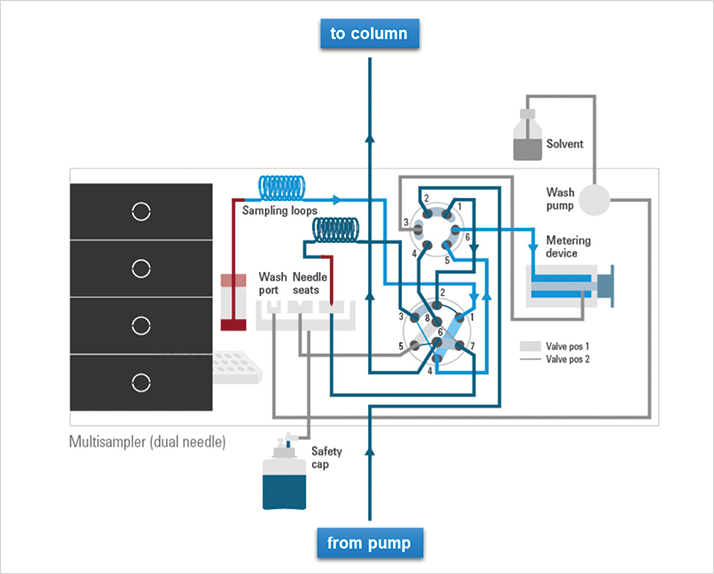
5. MS-PECD
Direct mass spectrometric detection of chiral molecules without any prior enantiomeric separation. Produced by: MassSpecpecD MS-PECD can analyze multi-component mixtures of chiral molecules by direct mass spectrometry using correlated electron-ion imaging. A circular polarized pulsed laser ionizes the gaseous chiral molecules. The three-dimensional angular distribution of photoelectrons is measured on a time- and position sensitive particle detector. The molecular ion is also detected in coincidence with the electron on a time-sensitive particle detector, providing the mass from the time-of-flight. Each electron that is detected is tagged by the mass of the ion that it originates from. The forward-backward asymmetry of the electron distribution along the laser beam (PhotoElectron CircularDichroism, PECD) is measured on the electron-imaging detector in correlation with the time-of-flight of the ion. The (electron, ion) correlation provides the direct MS indentification and enantiomeric excess of the enantiomers present in the multi-component chiral mixture.Potential impact: PECD has large enantiomeric sensitivity, on the order of 1-10 percent, a factor of 100-1000 larger than absorption CD, VCD or ROA. The correlated mass-tagged PECD gives direct enantiomeric selectivity. Direct mass spectrometric measurement of the enantiomeric excess of chiral molecules in multi-component mixtures. No prior enantiomeric separation of the sample, like GC, HPLC, SFC or IMS, is needed before MS-detection. No prior clustering of the sample with chiral ligands is needed before MS-detection. Laser ionization via intermediate vibronically excited states provides additional spectral selectivity, identification and sensitivity. The electron kinetic energy provides additional spectroscopic identification and enantiomeric selectivity. What the judges say: “Provides simultaneous identification and chirality information – much better then trying to correlate different separations performed for identification or chirality determination.”
6. Thermo Scientific Q Exactive GC Orbitrap GC-MS/MS
Gas chromatography combined with high-resolution/accurate mass Orbitrap MS detection for comprehensive sample characterization. Produced by: Thermo Fisher Scientific The Thermo Scientific Q Exactive GC Orbitrap GC-MS/MS system defines a new chapter in the gas chromatography/mass spectrometry space by combining the power of high-resolution gas chromatography (GC) and high-resolution/accurate mass (HR/AM) Orbitrap mass spectrometry. This technology is designed to advance chemical analyses in laboratories limited by older GC-MS systems. The system offers the highest selectivity in full scan through high resolution, as well as routine delivery of sub-1-ppm mass accuracy for confidence in identification. Add to this the high sensitivity and linear dynamic range for quantitation, and the result is a powerful full-scan GC-MS system.Potential impact: Thermo Fisher Scientific expects the Q Exactive GC system will allow laboratories to have a much deeper understanding of their samples than they’ve had before – with the highest degree of clarity. This improved clarity will have a major impact in metabolomic studies, untargeted screening experiments, and sample profiling in a wide range of application areas. Joshua Coon, University of Wisconsin, Madison, applies GC-MS to metabolomic studies to understand complex biological systems. “The introduction of the Q Exactive GC system is a game changer in this space,” he said. “The combination of fast, predictable GC separations with accurate mass capabilities will translate to an increased ability to profile entire metabolomes.” What the judges say: “Accurate mass capability has clearly demonstrated its strengths in liquid chromatography. This instrument is the long awaited expansion into GC.” “Brings a new dimension to GC-MS – especially for the analysis of complex samples, such as those used in metabolomics.”
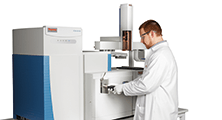
7. Bond Elut Enhanced Matrix Removal – Lipid
A sorbent that selectively removes lipids for efficient, reproducible sample clean-up. Produced by: Agilent Technologies Current methodology for clean-up of high matrix food samples can be inefficient, time-consuming and/or have high variability in results for LCMS and GCMS analysis. To date, there have been no sample preparation products that effectively remove the most challenging component of complex food samples, lipids, leaving scientists to modify or implement multi-step sample preparation techniques. In listening to food scientists needs, we have developed a new sorbent, Enhanced Matrix Removal-Lipid, that selectively targets lipids using a rugged, easy to use QuEChERS type protocol. This unique water activated sorbent selectively traps and removes lipids from high fat samples based on two interactions: hydrophobic and size exclusion. Lipids are trapped by the particle due to the long hydrocarbon chains, while most analytes cannot interact with the particle because due to size. The result is a sorbent that can efficiently remove lipids from complex samples, while maintaining high recovery for analytes of interest.Potential impact: Lipids impact separations and data quality, obscuring target analytes and causing time-consuming review of data. Lipids can also build up, affecting instrument performance, causing ion suppression in mass spectrometric analysis and variability of results. EMR – Lipid sorbent efficiently removes up to 92 percent of interfering matrix, a considerable improvement upon current techniques. As a result, the separation of target analytes is improved, resulting in faster data analysis, better reproducibility and higher data confidence. Fewer interferences also improves sensitive detection of low-level analytes. Cleaner samples allow for improved instrument performance with less downtime from sample-related maintenance, improving productivity and lab operating costs. What the judges say: “The importance of sample preparation is too often ignored. The Bond Elut material removes lipids effectively, addressing a particularly challenging issue in sample preparation.”
8. Thermo Scientific Gemini Analyzer
A rugged, portable instrument with dual technologies for chemical identification Produced by: Produced by Thermo Fisher Scientific The Thermo Scientific Gemini handheld analyzer is the first to integrate FTIR and Raman spectroscopy in a rugged, handheld instrument for chemical identification in the field. FTIR and Raman spectroscopy are the two leading chemical ID technologies for field-based analysis, widely deployed by military personnel, bomb technicians, hazmat teams and first responders worldwide. By integrating the two technologies, operators can easily conduct complementary and confirmatory testing with a single instrument, quickly switching between analysis techniques for a faster, more confident response. As the instrument is often used in hazardous environments, there are built-in safety controls: high contrast and resistive touchscreen, making it easier for users to operate; scan assist, which guides users to select the appropriate technology; and a motorized anvil that enables Raman and an industry-first FTIR scan delay. The analyzer requires minimal training for proficiency with clear results that eliminate subjective user interpretation.Potential impact: When elite military forces and first responders need to quickly and safely assess a hazardous situation, they need rugged, compact and easy-to-use instruments for better and fast decision making. The Gemini analyzer is smaller and lighter than two single-technology instruments, and as one EOD (explosive ordinance) technician noted during beta test of the instrument, “it’s like having a mobile lab in your pocket.” It enables emergency response personnel to do their job and secure a potentially hazardous situation quicker than ever before, leading to improved safety for our communities and for the responders themselves. What the judges say: “Combines two critical techniques for identification of potential harmful agents in a single device. What is most surprising is how long it has taken for this to be done – and done so well.”
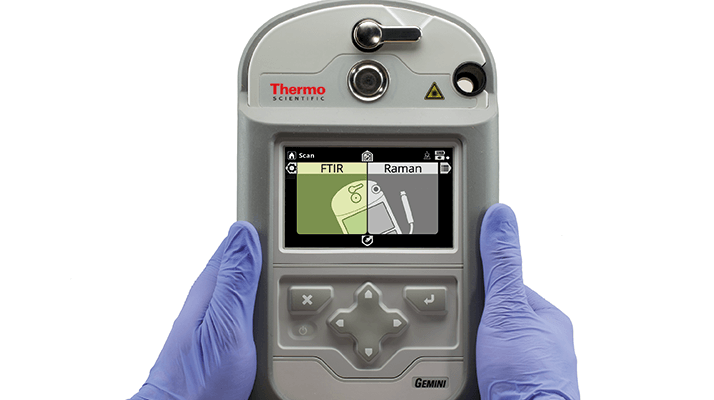
9. PhysioTel HD-XG
A fully implantable telemetry device that continuously monitors blood glucose Produced by: Data Sciences International The HD-XG is a fully-implantable telemetry device for use in research animals. It allows continuous, real-time monitoring of glucose directly in arterial blood. The implant also continuously monitors body temperature and physical activity, transmitting second-to-second changes in physiology. The glucose sensor is based on a proven technology using glucose oxidase as a catalyst to convert glucose and oxygen into gluconic acid and hydrogen peroxide, which in turn interacts with a novel metal electrode to give up electrons and create a current proportional to the amount of glucose available in whole blood. The HD-XG’s primary use is drug discovery and basic research related to diabetes and other metabolic diseases. It is also relevant to other research areas, including drug safety assessment.Potential impact: Potential impact: With implantable glucose telemetry, researchers are no longer limited to monitoring blood glucose using intermittent sampling with test strips, a method that can miss important events and result in variable data. Implantable telemetry is the gold standard for preclinical physiologic monitoring because it allows researchers to monitor numerous physiologic traits without anesthesia or restraint, decreasing stress to animals while increasing the accuracy of data and allowing for a reduction in the number of animals needed. This new platform will allow development of more accurate disease models, new treatments, and new drugs to improve the quality of life for the increasing population of people with diabetes. What the judges say: “A clever tool for in-vivo monitoring.”
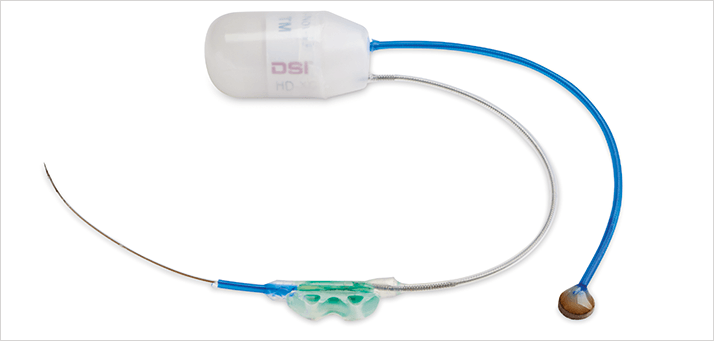
10. MicroCal PEAQ-ITC
A new generation of isothermal titration calorimeters for quantifying biomolecular interactions Produced by: Malvern Instruments The MicroCal PEAQ-ITC and MicroCal PEAQ-ITC Automated are sensitive, low volume isothermal titration calorimeters for the label-free, in-solution study of biomolecular interactions. Designed to enhance laboratory efficiency, these calorimeters deliver direct measurements of all binding parameters in a single experiment, using as little as 10 µg of sample. A key feature is the control software and data analysis package, which offers simple operation, enhancing accessibility to life science users. The MicroCal PEAQ-ITC Automated system has high throughput and the low sample consumption, providing fully walkaway, unmanned ITC measurements. The result is quicker secondary screening, faster hit validation and greater analytical productivity. Integrated MicroCal PEAQ-ITC analysis software offers experiment design simulation, batch evaluation of large data sets, automated assessment of data quality and a streamlined user interface that guides the user to final figures and presentation quality graphs quickly and easily.Potential impact: ITC is now an essential tool for the life sciences, most importantly in drug discovery where it is used for hit validation and lead optimization. These pioneering new systems increase the robustness of the technique, increase lab productivity and extend accessibility so that even non-experts can routinely generate reliable information. The instrument control software uniquely incorporates all of the tools that the user needs to move efficiently from experimental design to final results, including user-friendly guided workflows with embedded video tutorials. The MicroCal PEAQ-ITC Automated system has the capacity to run four 96-well plates unattended. By combining the excellent data quality and reproducibility with high speed, unattended operation, this system can provide early indications of high quality hits while freeing researchers for other tasks, thereby potentially enhancing the speed and productivity of drug discovery projects. What the judges say: “Miniaturization and automation of a powerful tool.”
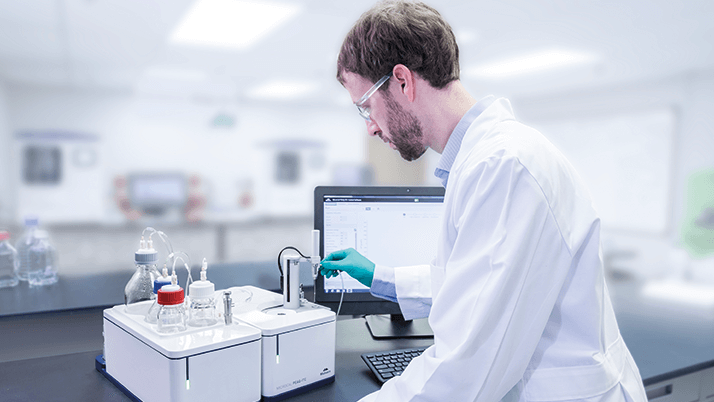
11. Pegasus GC-HRT 4D
A marriage of high-resolution time-of-flight mass spectrometry and GC×GC Produced by: LECO The Pegasus GC-HRT 4D combines the highest performance GC×GC and the most accurate TOFMS on the market together with High Resolution Deconvolution (HRD). Users are able to find more analytes than ever before and identify components with confidence. LECO’s integrated all-in-one ChromaTOF-HRT brand software controls all hardware elements, automatically calculates mass accuracies, and identifies second dimension peaks. With innovative features and functions based on years of experience in GC×GC, the software efficiently delivers a great deal of chemical information per sample.Potential impact: With the integration of two high performance technologies, the Pegasus GC-HRT 4D gives users an unprecedented ability to interrogate complex samples. No matter the industry, from petrochemical to metabolomics, the Pegasus GC-HRT 4D will transform the gas chromatography landscape with its superior sensitivity and peak capacity potential. The Pegasus GC-HRT 4D will help users to fully explore their sample down to the most intricate details (and find what they have been missing), discovering breakthroughs in a variety of markets. What the judges say: “Combines two of the most important developments in GC: GC×GC and accurate mass MS.”
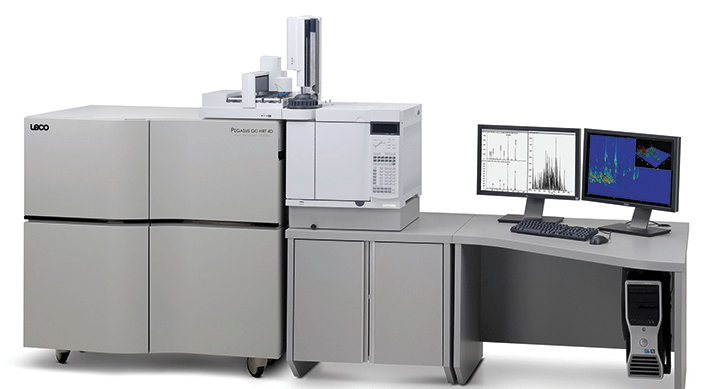
12. Polyarc Reactor
A catalytic microreactor that converts all organic compounds to methane prior to reaching the FID.Produced by: Activated Research Company The Polyarc Reactor is a catalytic microreactor that enhances existing gas chromatographs (GC) with flame ionization detectors (FID) by converting all carbon-containing species to methane molecules prior to their detection by the FID. Its seamless integration into GC/FID systems eliminates standard time-consuming and costly calibrations, enables quantification of compounds with unavailable commercial standards, and increases FID sensitivity to select molecules.
Potential impact: The Polyarc Reactor is a universal carbon detector technology revolutionizing chemical analysis for GC/FID users within a variety of industries. In the petroleum and natural gas industries, scientists and engineers can now detect CO, CO2, formaldehyde, formic acid, and many additional compounds that previously had little or no visibility in the standard FID in the presence of sulfur, halogens, and other heteroatoms. The food science and pharmaceutical industries can now quantify compounds where standards are prohibitively expensive or simply not available. Academic labs are improving the speed and ease with which they analyze compounds allowing them to perform research better, faster and cheaper than before. The unique advantages of the Polyarc Reactor continue to impress customers and bring value and time saving to a variety of applications and industries. What the judges say: “Improves the performance of FID for a range of analytes, in a very simple way.” “Solves a problem that is as old as GC.”

13. 5D Ultra-e (LC-GC×GC-QqQ MS/FID)
A powerful unified separation-science toolProduced through collaboration between Shimadzu, Chromaleont, and the University of Messina. The 5D Ultra-e is a unified system that combines comprehensive two-dimensional gas chromatograph and triple quadrupole mass spectrometer/flame ionization detector with an HPLC system connected online. The instrument can be used in seven different combinations ranging from one-dimensional HPLC with a photodiode array detector to on-line LC×GC×GC-QqQ MS/FID. In the latter configuration, it is possible to set different LC, PTV, GC×GC, and QqQ MS conditions during the same run. The online HPLC system enhances the power of comprehensive GC×GC analysis and simultaneously improves productivity by increasing automation. Furthermore, GC×GC system combined with an ultra fast triple quadrupole mass spectrometer allows both untargeted analysis as well as targeted analysis of components in complex samples. The 5D Ultra-e was developed with the principal involvement of Luigi Mondello (University of Messina) and Mariosimone Zoccali (Chromaleont).
Potential impact: The on-line nature of the system, compared to off-line approaches (e.g., LC//GC×GC, solid-phase extraction//GC×GC), reduces the risks of sample contamination, improves run-to-run precision, and enables the setting of batch-type applications, increasing laboratory productivity. The system can be used in a variety of configurations, depending on the specific analytical requirements. Practically all of the requirements of any GC-based application can be covered along the line of the possible operational modes. What the judges say: “Many food and life-science samples are extremely complex and no single chromatographic method can separate them. Two-dimensional methods have their limitations, but this system allows easy access to an even higher dimensional study of the sample: three chromatography dimensions and one MS step.”
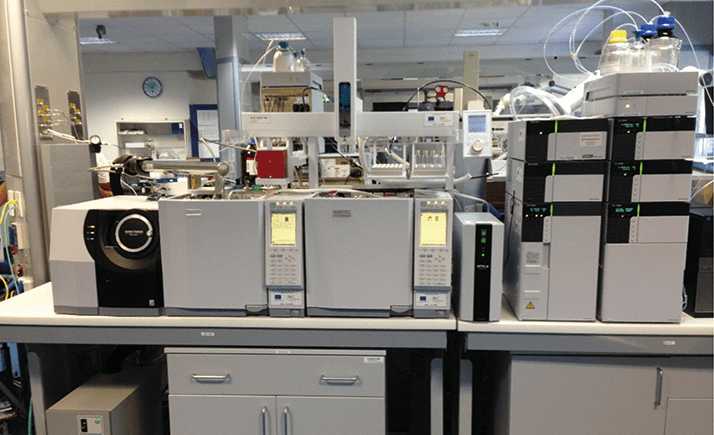
14. IONICON fastGC
Adds near real-time chemical separation to PTR-TOFMS trace gas analyzersProduced by: IONICON IONICON PTR-TOF systems are capable of measuring trace gas samples in real-time with a high mass resolving power and low detection limits in the sub-ppt-range. The new “fastGC” module adds an optional chemical pre-separation step before the analysis. The module consists of a short GC column with an advanced heating concept for ultra-fast heating and equally fast cooling rates, which makes this pre-separation step nearly real-time. The fastGC module is integrated with the PTR-TOF and the normal sample gas inlet is utilized. This allows researchers to perform real-time measurements and add fastGC runs at time points of interest for enhanced separation and identification. A fastGC’s spectral run is accomplished in less than one minute, which brings GC separation much closer towards real-time analysis and adds another dimension to IONICON’s PTR-TOFMS series products. The fastGC is available as upgrade to existing instruments.
Potential impact: A key advantage of PTR-MS is to see trace concentrations in real-time. Compared to the discrete sample analysis in GC-MS, this is like comparing classical photography to a HD movie. However, even though high-resolution PTR-TOFMS systems can separate and identify isobaric compounds (same nominal mass, but different chemical composition), the separation of isomeric compounds (same chemical composition) has remained an advantage of GC-MS. This has now been overcome with the introduction of IONICON’s fastGC add-on. Being fully integrated with the analyzer, it enables real-time measurements and add fastGC runs at time points of interest for enhanced separation and identification. What the judges say: “Practical, fast separations.” “Many chemical processes are fast, too fast for regular GC – this device combines the strengths of PTR with those of fast GC.”
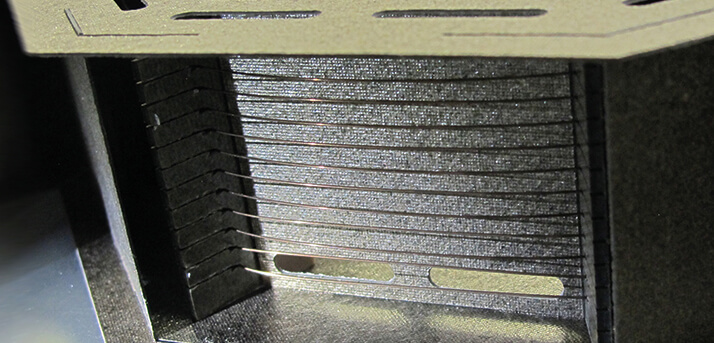
15. Nexera UC
A combination of SFE with SFC or LC separation technologies and MS/MS detection Produced by: Shimadzu The Nexera UC chromatography system is the world’s first unified and fully automated instrument that combines supercritical fluid extraction (SFE) with supercritical fluid chromatography (SFC). The SFE/SFC-MS platform combines quick and easy online sample preparation with advanced chromatographic analysis and high sensitivity detection. The Nexera UC serves a wide range of applications; for example, in food control, biopharmaceutical research, and environmental analysis. It enables reproducible extraction and stable analysis even of unstable samples prone to oxidation or dissociation when exposed to light or air. Not limited to SFC analysis, the Nexera UC is also capable of analyzing extracted samples by HPLC, if a conventional reversed phase separation is preferred.Potential impact: The Nexera UC system can eliminate the need for complicated sample pre-treatment and enables reliable and stable analysis of delicate samples. Furthermore, the fully automated Nexera UC system has a high target analyte recovery rate and reduces the possibility of human error during analysis when compared with conventional manual systems. In addition, the Nexera UC system significantly reduces the quantity of organic solvents used for applications in normal phase mode or chiral analysis of enantiomers. What the judges say: “[The Nexera UC] considers sample preparation and analysis as one integrated process. And that is the way we should look at it. Both steps influence each other and we should not optimize them in isolation.”
